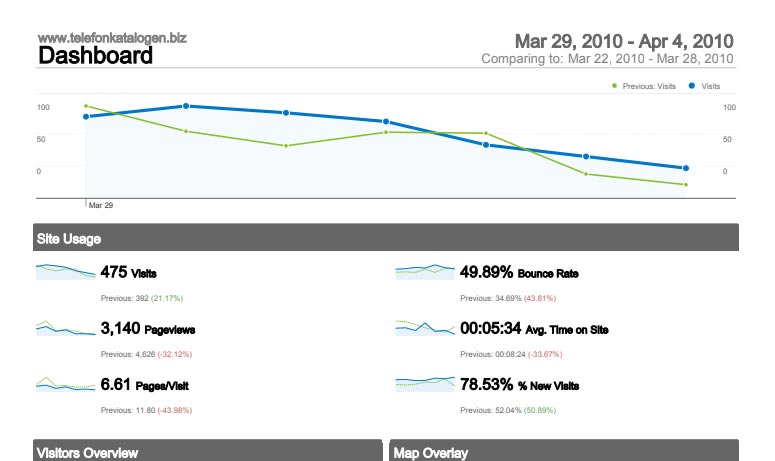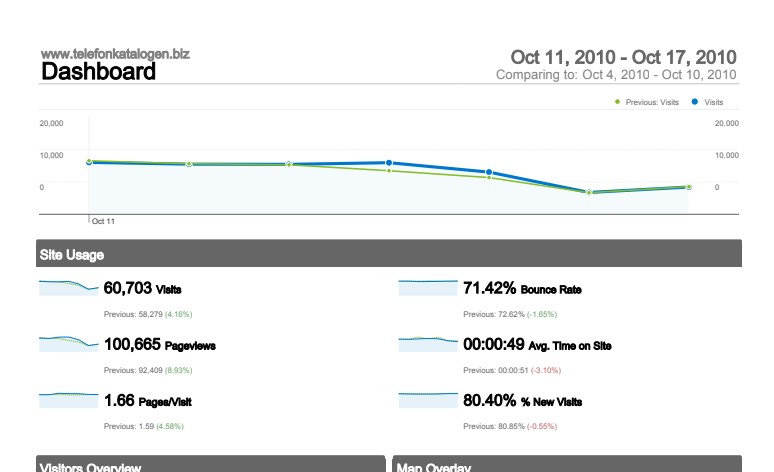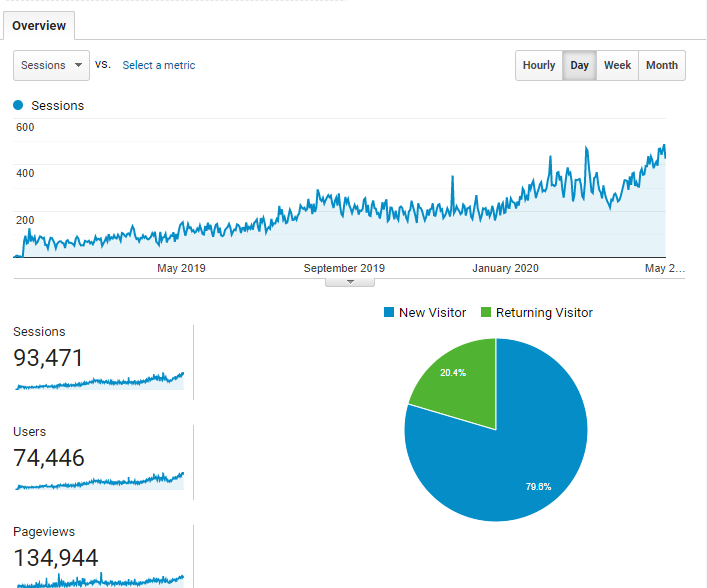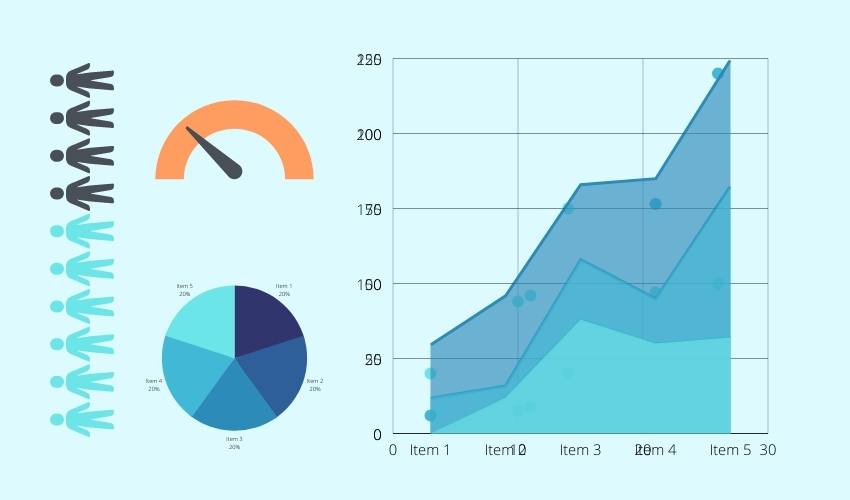A lot of businesses are looking for new ways to grow.
One way is through competitor analysis, which can be done using a tool called SEMrush.
This blog post will go over what you can learn from this practice and conduct it with the help of SEMrush.
The first thing that you should analyze during your competitor research is who the competition is.
You want to get a feel for their traffic numbers to rank high in search engine rankings. Next, you need to increase your own site’s searches to compete against them. Next, find out what keywords they are ranking for because that matters the most.
As people searching for a specific keyword don’t care about anything else.
Table of Contents
What Is a Competitor Analysis?
Conducting a competitor analysis means identifying and evaluating your competitor’s strengths and weaknesses. Also, marketing strategies and other factors. Competitive analysis will provide insight into your industry and how to best market in that industry.
Competitor analysis helps to compare how you do against your competition.
Once you understand what others are doing and the challenges they’re facing, you will be better able to avoid their mistakes.
A competitor analysis surveys the competition to show how your company compares. In comparison, a value proposition explains why you are more appealing.
When it comes to your competition, you need to be mindful of how different they are from you. Competitive analysis can’t run on autopilot without being modified when necessary. You are unlikely to know which strategies are successful or not in their circumstances. Besides, they could make mistakes based on what they’ve done wrong.
Competitor analysis is helpful to understanding the marketplace and informing your advertising strategy. If you want to be an expert at something, what others do is not enough. They only want the same thing as everyone else. Your goal should be to improve on what they do so you can outshine them and take the lead.
Why Do You Need Competitor Analysis in Marketing?
Doing research is as essential as marketing for any organization. It can help you make the right strategic decisions. Else, create a more profitable company brand.
To be a successful athlete, you need to work on your body and feed it the proper nutrients. For any marketing strategy to be effective, research needs to take place. Suppose you’re making decisions on insufficient data. Then your plan is not sustainable and will produce guesses at best.
Conducting a competitor analysis can reveal many aspects of your business that aren’t otherwise clear to you. Besides, you many ideas about how to improve and build upon your business.
This is by comparing it with others in the same industry.
- Expand your customer base and discover new opportunities.
- Identify areas where you are deficient in your offerings.
- Understanding your audience’s needs is essential for success.
- Understanding the economic dynamics of a region is critical when deciding where to live.
- Identify the trends you need to balance for a successful year.
- Consider expanding to new marketing channels.
- Stay aware and protect yourself from any indirect competitors or other threats.
- Before buying something, try to find out how people react to it.
How to Conduct a Competitor Analysis?
Gathering intelligence on the competition is essential. It is one of the steps in your business development strategy. Also, understanding how they are marketing their product or service. This will help you develop a better plan for your marketing efforts.
- Communicate with your customers
- To convince people who have little knowledge about your product or service. You need to be willing and able to go beyond the surface.
- Suppose you’ve had difficulty with a transaction. Contact your customer service team to explain the situation.
- Use available data and information.
- Contact your competition and find out what they are currently available for.
- Use a competitive analysis tool to track your competitors.
What Is contained in a Competitor Analysis?
This guide will walk you through 17 steps to use SEMrush to analyze your competitor. We’ll discuss the different types of reports and how they can help us understand our results.
- Competitor analysis is divided into four stages:
- Identify potential competitors in your market.
- Analyze your industry competitors
- Review and make sure that the information is correct.
- Benchmark your workload.
Identify potential competitors in your market.
When considering customer service, it is necessary to identify who your competitors are. Not all other businesses provide the same benefits like yours. They could be regarded as competitors because they share some of the same qualities.
Analyze your industry peers or competitors. Direct competitors are easier to identify, and you know some (or even all) of them. Direct competitors offer similar features, benefits, or services as you do. It’s essential to be aware of competitors and the differences in price, quality, features, and service.
For example, sometimes hotels will exist under a different name. But with the same properties and offers as their competitor across town.
They can help you lower your booking costs in some cases.
- Indirect competitors sell a product or service that is identical to yours but belonging to a different industry.
- The competition for your product is other products or services of the same type.
- Examples of competitors
- Although both phones offer many of the same features, they are not direct competitors.
- The Samsung tablet is the indirect competitor to Apple iPhone.
- Zoom is like an Apple iPhone.
Too often, it’s easy to get focused on your competitors and lose sight of trends or changes in the market.
Suppose Kodak had been aware of their replacement competitor (mobile phones and digital cameras). Then, they would have made better business decisions before it all went wrong for them.
How Many Competitors Should You Research?
One of the essential steps in your strategic planning process is researching possible competitors. Yet, you should only examine their performance for what you need, as analyzing them can be costly.
To understand the competition. It is an excellent idea to analyze peers from three primary categories. Small businesses in your area, small businesses within your industry, and same-sized companies.
Get the basic info from competitor research.
Researching competitive industries may be helpful. This is because you might learn about the successful strategy currently being used.
For example, if you are a small company with less than 100 employees. Competing against an established company with over 10,000 employees. Agile management practices will give you the edge.
Start by gathering basic information about a competitor’s research, such as:
- Number of workers
- The annual rate of turnover
- Locations of all offices.
- Number of customers
It can help your business’s growth. This is if you learn about other companies in a similar industry who are growing and expanding or going out of business.
What markets are your competitors in?
Learning the locations where your competitors are operating can be helpful. It helps to uncover new possibilities that you might not have considered.
Before you consider expanding your business, it is essential to consider your growth potential and set long-term goals.
Before now, it might take you days to track down this information if you’re lucky. But thanks to our product, the data is only an email or call away.
What Pricing Strategy and Products Does Your Competitor Has?
You’ll need to know what products and services are available in your field before you can gauge the level of competition.
Direct comparisons are difficult because the products might differ. Yet, by noting your competitors’ full features, you can spot any areas where there may be opportunities for improvement.
Some businesses avoid listing their prices. In this case, you must do a bit of covert research and contact your competitors to get quotes.
- Competitors are one of the primary interests of firms.
- Are the company’s current existing products successful?
- Do they have established products that are market leaders?
- Are they spending lots of money to create new products?
- Are they phasing out products and discounting these products?
So, the following step is to look at your competitors and compare them all. Then, review their website to find all the products and services they offer and note their pricing strategy.
Pay attention to when you can get discounted items; if you track your competitors, you’ll know how to get the best deals. Don’t forget things like referral programs or free trials.
Shipping costs are also essential to record and compare. You must ensure that you have not positioned your business out of the market or offer free shipping. This is a general expectation from customers today. Also, differentiating factor for closing sales.
How Strong Is Your Competitor’s Website and Can You Compete?
For any business with an online presence, the strength of your website is vital to success. But the competitiveness of a rival’s site can influence how traffic comes in. Also, if people find what they are looking for when they visit.
Start with a manual visual assessment of your competitors’ site:
- Have they ever written a blog post?
- Is their content fresh?
- What message do they intend to convey?
- How many total pages does the website have?
- What are the design and user experience like on the website?
- Does the app have a sleek and modern look, or is it more outdated-looking?
- Is this an eCommerce site or more of a brochure?
When performing competitor analysis, it’s essential to check the strength of their websites. Then, you can benchmark your site against theirs. Besides, see if you’re in a position to compete or need other ways to be disruptive.
What is your current opinion of significant competitors in the marketplace?
When doing your competitive research. It’s important never to assume that a competitor is well received. Else, successful because they have a presence in the market.
A competitor might have a shiny product and fancy marketing, but it doesn’t equate to sales. Moreover, it can be costly to copy competitors who don’t understand their target audience’s desires, needs, and thoughts.
Search for relevant reviews, such as those in Trusted Reviews. One of the valuable features of Glassdoor’s review system is a company-wide employee review. Additionally, check for Google reviews by performing a search using the company name. Looking at competitor pages on Facebook.
The Brand Monitoring Tool then shows you a breakdown of positive, negative, and neutral sentiments. Next, enter your competitor’s website URL into a search engine and look at the overview tab. You will find that there is a graph that plots sentiment distribution metric by sentiment type.
Analyze Your Competitors Now that you have a good understanding of your competitors, the next stage is to analyze them. For example, what are how they attract their audience and who are their connections?
Who is your competitor’s target audience?
It’s essential to know the audience for your business. This can allow you to improve personas for your market.
Look to identify your differences from competitors. Also, make them the focal point of your unique selling proposition (USP) that strengthens your brand voice.
To develop your company’s marketing strategy. First, look at the overlapping aspects of what you sell with what other companies do. This helps to compare areas with promising potential for increasing your market share.
Does your competitor use a specific tone or language?
Catching the industry’s general tone is necessary to ensure that you will speak to your audience. This is a critical part of the research to ensure that we connect with our audience.
Specific niches come with jargon and colloquialisms. This may work better when communicating with your target audience.
Radical changes to communication can be successful. But they must first be grounded in the traditional ways of doing things.
Reviewing your competition’s website and content can help you understand their rules. This, in turn, allows you to know what type of rule-breaking is permitted.
- Words they use
- The message they deliver
- Emotion and sentiment
- Reading level
- Imagery used
Find out details about a competitor’s marketing strategy. Do this by reviewing all their advertising and social media channels.
Consider whether your competitor uses the same tone across all channels or if it varies what they use.
What Market Share Do Your Competitors Have in Comparison to Yours?
As the market leader, they will control prices and other aspects of how the product is received in the marketplace.
The most important takeaway is that having the largest market share doesn’t make a product or service the best. Yet, under the microscope, understanding your market share compared to other companies. It will help you recognize who is competing against you and where they stand.
Suppose you find yourself in the position of a market leader. Your strategy should be reactive rather than proactive if you hold little or no market share. You can take risks and disrupt your product offerings or messaging to try something new.
To calculate market share, there is a simple formula, but it requires a lot of research.
- Market share = company sales industry sales
- Understand Different Marketing Channels
- By looking at the different places, your competitor brings you traffic from. You can make assumptions and then dig deeper into:
- Direct — Another company you’re competing with is conducting in-person marketing. Else, the customers already know your competitor’s name.
- Referral — a competitor is buying space on other sites. Also, investing in public relations for brand mentions. Moreover, links on social media, investing in content posted to those sites or running cross-promotions with them.
- Search — You should invest in on-page technical SEO, keyword/content strategy, and link building.
- Social — Your competitor is active on social media.
- Paid — the competition is spending budget on paid advertising, most likely from Google Ads.
Traffic Journey is an excellent tool. It helps in understanding the percentage of direct, referral, and organic searches. Also, social traffic and paid traffic on a website.
What strategies are your competitors using for online advertising?
Once you have analyzed your competitor’s marketing strategy, it is time to consider using the Internet to further their business.
This blog post covers Google Ads (PPC), display ads, and Product Listing Ads (PLA).
Keyword research can help you identify what people are looking for when using the Internet. For example, paid ads, or sponsored links, appear at the top of search results. In addition, they show that clicks lead to conversions.
Return to the tool for an overview of keywords that your competitors are targeting.
Repeat this in the PLA Research Tool and the Display Advertising Tool. Again, the is to get a full review of where your competitors are spending their paid advertising budget.
For eCommerce brands, reviewing PLAs will help with pricing strategy. Also, show which products are selling for your competitor. Besides, the PLA Research Tool makes it easy to scope out what keywords other eCommerce stores are targeting. Moreover, the Display Advertising Tool can give your insight into their display ads. You can also refer to the advertising information you collected that shows discounts and sales. Just because someone else is doing something does not mean working for them or those around them.
Because competitors are using specific paid channels doesn’t mean we have to rush there. But, it’s essential to consider why they are using them and if this would be a good fit for your brand. That way, you’re researching the most effective channels as well.
What “strategy” do your competitors use in their content marketing?
With a competitor’s site analysis, you can figure out what content strategy they are pursuing.
When you know what content is successful for your competitor. You can extrapolate and determine the elements of that content that are attractive to your audience. This will help you structure a successful strategy.
Types of content that companies might produce:
- Blog
- Whitepapers
- Webinars
- Podcasts
- Case studies
- Newsletters
- eBooks
- Buying guides
Also, to evaluating content types, you need to consider how often the blogger makes posts. For example, are they posting blogs daily, weekly, or monthly? Is their content posted usually but lacking in quality or value? Or, do they only post in-depth articles that have a considerable amount of time investment?
Particularly, look for any lead-generation content that asks what the visitor’s action will be. For example, are they looking to download something or contact somebody?
How engaging are your competitor’s posts?
Just because a site produces content does not guarantee the audience is responding. Review on-page and off-page indicators to see how your target audience is engaging with the material.
The page may have reader counts, share counts, or comments. Use the Domain Overview Tool in SEMrush to view your page-level traffic and links.
Create a Competitor Analysis Matrix/Grid to Find Growth Opportunities
A competitive analysis matrix is a chart that displays competitors. Also, their positioning about each other by comparing price, features, services, etc.
The competitive matrix is simple to read, as you can see how companies are positioned. This is in comparison and which ones may be rising stars.
Also, to see who your current competition is. You can also see which companies will be potential competitors in the future.
Analyze the Information
Now that you have a variety of information, it’s time to organize it. This will help you avoid getting overwhelmed by analyzing too much at once.
Put your information into these categories:
- Company
- Products and pricing
- Audience
- Marketing
Gather information by using tools like mind mapping to compare the data.
Visual information is more assimilated than text. So, an excellent long-term memory tool for your presentations might use images rather than words.
On the board, use keywords and sentences to represent more complex information. Then, insert graphs downloaded from each stage above.
Combine your spreadsheet with this checklist to dive deeper into relevant information.
Complete a SWOT analysis for your competitors and yourself.
We can use the information to create Strengths, Weaknesses, and Opportunities. Also, Threats (SWOT) analysis for each competitor.
An easy way when doing competitive analysis for your site and make a list of its strengths. Also, weaknesses, opportunities, and threats.
This research has developed a comprehensive understanding of your business’s opportunities and challenges. As a result, you should be aware of any future challenges. Moreover, aim to stay ahead of your competitors through solid marketing.
Benchmark Yourself
The final stage of analysis is to compare your practices to those of your competitors to know where you stand. Set challenging goals for yourself and measure how far you have come.
Be sure to review your analyses every so often and update the information. That could be once a month, or it might even be quarterly.
Remember: Competitive analysis is an investment, but it’s worth your while.
Conclusion
The information provided in this blog post should be enough to get you started on your competitor analysis. You may want to consider some of the other tips we’ve shared for a more comprehensive review. But Competitor Analysis is an essential first step before launching any marketing campaign. Else, promoting new products. If you don’t have time to do it yourself and need help with research or analyzing data, let us know! Our team has years of experience working with clients across industries. They include retail and auto parts. Also, e-commerce sites, etc., so reach out if you want our expertise at no cost!
FAQs
How do you compare competitors in SEMrush?
This information can be found in the SEMrush Traffic Analytics Overview report. Enter up to five competitors to compare and see their traffic patterns with a glance at their stats
How do I set up competitors on SEMrush?
To add a competitor from this list to your campaign. Select the gray “Set as competitor” box next to their domain name. You can also remove one of your current competitors. This is by choosing the drop-down menu and clicking on “remove.”
How do you find competitor analysis?
Keyword research is the first part of a successful SEO campaign. Conducting keyword research allows you to find keywords. Also, content ideas that other websites may not be exploiting yet for SEO purposes. For example, if you can’t find any website mentioning or covering your topic.
Then it would be best to write something about this subject.
How do I see competitor’s keywords in SEMrush?
The first thing search engine optimization experts such as Adseo does is to increase their ranking by checking metadata for the page’s title. The meta tag, title, should show competitors’ keywords in a competitive field.
How do I find my best competitors?
A few effective techniques for identifying direct competitors:
Research the market for products. Note companies you would sell your product besides.
Make an effort to request feedback from your customers.
See if there is a community online for your destination, social media, or forums.
Share This Story






![How to do Competitor Analysis Using SEMrush 6 What is Google Analytics [Learn How to Use it in 5 Minutes]](https://page1clients.com/wp-content/uploads/2021/06/google-analytics-500x383.jpg)
